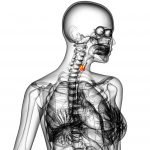Tolle Totum
Allison Creech, MEd, ND
For those of us who have been following the field of mind-body medicine, we have seen a tremendous progression in the current era. While the science of mind-body medicine can be linked through a common basis in the study of stress and coping that originated in the 1960s and 1970s with sentinel researchers like Hans Selye, Herbert Benson, and Robert Ader, the origins of the concept can be traced back thousands of years. Hippocrates (460-377 bc) wrote: “The natural healing force within each one of us is the greatest force in getting well.”1 What Hippocrates spoke of is the vis medicatrix naturae, also reflected in the more ancient philosophies of Traditional Chinese Medicine, Ayurveda, and other indigenous forms of medicine. To our ancestors, mind and body were not separate. They saw them as joined through a common expression of energy, so healers used tools and resources that activated body, mind, and spirit to raise energy and bring the body into greater energetic alignment. These ancient practices recognized a truth later articulated so eloquently by Albert Einstein in his famous equation E = mc2 (energy is mass times the speed of light squared): we are energy, and energy precedes matter.
The Core Group Modalities
Our active curiosity about the interplay of energy, mind, and body continues to drive science and medical practice forward. The field of mind-body medicine is now vast, with an impressive evidence base of published literature, a growing field of clinical methods, and diverse approaches to integrated health. The field of mind-body medicine has undergone an evolution and is multifactorial in the contemporary world. From both a research and clinical perspective, many fascinating areas exist in the study of mind-body medicine. Some scientists explore psychophysiology through the nuances of molecular biology and cellular communication. Others consider the influence of epigenetic signals on the expression of DNA and seek to understand how perception mediates genetic expression. Researchers interested in psychoneuroimmunology emphasize immune response, hormone secretion, and biochemical markers as they relate to psychological states. Other experts consider psychological outcomes and track the influence of core beliefs and emotional habits on well-being. Others explore the neuroscience of brain plasticity and consciousness. Clinicians have also developed a range of mind-body resources and have an established history of working with all kinds of medical conditions, as well as maladaptive emotional states, trauma, chronic pain, and various forms of mental illness. Although new therapies are always being developed, the core group of mind-body modalities includes meditation, breathwork, biofeedback, relaxation training, guided imagery, cognitive-emotional therapies, meridian therapies, and energy work. Some practitioners focus more on energy medicine and energy psychology, using tools to specifically promote balance and flow through chakras, meridians, and other biological energy systems. This work shifts the emphasis to optimizing health and increasing the flow of vis, regardless of health status. Positive psychology also supports this goal, and clinicians are now actively teaching generally healthy people how to use these methods to promote psychological adaptation and to live more satisfying lives. The advances in the mind-body field are compelling for researchers, authors, teachers, and clinicians alike.
Stimulate the Vis
Although the approaches to mind-body medicine are diverse, a substructure of core principles comprise the heart of the mind-body experience. These principles provide the body with an ability to calm and to center. They support balanced physiological function. They promote resilience and adaptation. They promote healthy psychological adjustment and self-empowerment. In essence, this core stimulates the vis medicatrix naturae and demonstrates (through experience) that something different is possible. A consistent theme through all the mind-body modalities is that you cannot just think about or have intellectual awareness of this material to create change in your life. You must actually feel it and experience it in the present moment before these processes begin to make a difference. Thinking “I forgive them” is a lot different than actually forgiving and making peace with your past. Thinking “I am lovable and worthy” is a lot different than feeling love for yourself and experiencing your inherent value and worth. Sustainable change is positively correlated with our ability to actually embody these principles and to create a felt-sense experience of something new.
A Strong, Shared Foundation
Some of the words that describe the shared foundation of mind-body approaches to health are heart, connection, coherence, awareness, presence, mindfulness, and compassion. This foundation elicits a physical shift to a restorative state, activated through the parasympathetic nervous system. It also evokes a potential for transformation through cognitive, emotional, and sensory systems. Even cellular mechanisms respond differently within this environment. Neuroplastic effects are noted in the brain, and psychological enhancements are experienced through subjective perception.2 When we consciously attend to our experience, we are able to observe habitual patterns of thought. As we learn to view these patterns without our habitual emotional reactions to them, we are able to see that they do not define us. We are literally able to change our minds; in doing so, we redefine the way we experience ourselves. As this process filters through psychophysiological pathways, new potentials open, and the vis is better able to express itself through our cellular selves. This restores a healthy homeostasis and allows us to experience ourselves in a different way. By changing our thoughts, attitudes, and state of mind, we deactivate neural networks that limit the vis and work against wellness. By the same process, we create new life-affirming neural networks and change the signals being sent out through our cells. As we come into ourselves and learn to redefine what it means to be us, we experience new levels of peace, certainty, trust, and health. We literally change our minds. We become active cocreators engaged with the life force.
As we tune into this level of experience, we enter a state of coherence. As defined by the Institute of HeartMath,3 this is a state of psychophysiological synchronization, where our physical, mental, and emotional systems are in a pattern of optimal health and peak performance. Researchers at the Institute of HeartMath study the role of positive emotions in coordinating system-wide coherence and are reporting findings that clarify the ways the heart and the brain interact. The main concept in coherence is that the heart generates dynamic patterns of neurological, hormonal, and electromagnetic information,4 which acts as a primary signal for integration among physiological systems. When we consciously induce positive emotions, we influence these systems in subtle but powerful ways. By creating a state of coherence, we improve brain processes that control our nervous system, cognitive function, and emotions. A coherent state also generates a distinct physiological mode that enhances endocrine and immune function, promotes parasympathetic activity, and improves general physiological performance.4 Research indicates that in a coherent state “bodily systems function with a high degree of synchronization, efficiency, and harmony, and the body’s natural regenerative processes appear to be facilitated.”4(p9) In other words, coherence is a medium for the vis.
Evoking the Vis
I try to integrate the foundations of mind-body medicine into the daily practice of patient care, with the ultimate goal of evoking the vis. I draw from concepts in naturopathic philosophy, which teaches us that our best medicine comes from within. I draw from concepts in positive psychology, which emphasizes the importance of cultivating positive emotions in daily life.5 I draw from concepts in neuroscience and support people in their process of “change the wiring, change the firing.”2(p49) I draw from what I have learned about coherence and the power of the heart. I draw from a range of mind-body techniques, which allow people to have a temporary but significant change in the way they experience themselves. I use cognitive, sensory, emotional, body-based, and interpersonal tools to support patients in the ways best suited to them. I listen with care, empathy, and heart-centered awareness. I ask questions that lead patients to greater clarity about their own patterns and habits, always offering acceptance and the possibility of change. I practice and teach tools that help us to get out of our heads and get into our hearts and to learn to trust the wisdom that we find there. I believe that we can learn to be present and conscious creators of our lives and that, in doing so, we connect with the life force that is always available within. To me, this is the heart, the art, and the practice of the mind-body experience.
 Allison Creech, MEd, ND is a licensed naturopathic physician, with a master’s degree and PhD training in clinical psychology. Practicing in Toronto, Ontario, Canada, she offers expertise in counseling and mind-body medicine, while integrating across the naturopathic modalities. She also spends time teaching at Canadian College of Naturopathic Medicine (Toronto), where she enjoys helping new physicians gain confidence in health psychology and naturopathic philosophy. She continues to do advanced training in homeopathy, women’s health, consciousness work, and behavioral medicine.
Allison Creech, MEd, ND is a licensed naturopathic physician, with a master’s degree and PhD training in clinical psychology. Practicing in Toronto, Ontario, Canada, she offers expertise in counseling and mind-body medicine, while integrating across the naturopathic modalities. She also spends time teaching at Canadian College of Naturopathic Medicine (Toronto), where she enjoys helping new physicians gain confidence in health psychology and naturopathic philosophy. She continues to do advanced training in homeopathy, women’s health, consciousness work, and behavioral medicine.
References:
The Quotations Page. Quotations by author. http://www.quotationspage.com/quotes/Hippocrates/. Accessed February 10, 2012.
Dispenza J. Evolve Your Brain: The Science of Changing Your Mind. Deerfield Beach, FL: Health Communications Inc; 2007:49, 50, 248.
Institute of HeartMath. Connecting hearts and minds. http://www.heartmath.org. Accessed February 10, 2012.
McCraty R, Childre D. The Appreciative Heart. Boulder, CO: Institute of HeartMath; 2002:6, 8, 15.
Seligman ME, Csikszentmihalyi M. Positive psychology: an introduction. Am Psychol. 2000;55(1):5-14.





